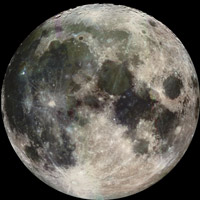NASA scientists have witnessed a rare event of an explosion on the surface of the moon caused by the collision of a meteoroid that was captured by gravity and deflected towards it

During the month of November 2005, NASA scientists witnessed a rare event of a meteoroid collision on the surface of the moon. The explosion was equal in strength to the explosion of a 70 kg TNT explosive, and one of the scientists who witnessed the collision estimated that this created a new crater on the surface of the moon with a width of 3 meters and a depth of 0.4 meters.
According to Wikipedia, the free encyclopedia, a meteoroid is a small celestial body (from the size of a grain of dust to a rock a few meters in size) that moves within the solar system.
The scientists believe that the source of the meteoroid is from the volley of "Taurids" that passed by the Earth at the end of October and the beginning of November. One of these meteoroids appears to have been caught by the moon's gravity and deflected towards it; The meteoroid collided with the surface of the moon with a huge explosion and created a new crater there. Unlike the Earth, whose atmospheric layer vaporizes the small meteoroids even before they reach the surface, the Moon does not have such a shield and therefore each meteoroid leaves an additional "scar" on its surface.
The collision was "caught" by the scientists while they were testing a new telescope for monitoring collisions on the moon, and the video camera attached to the screen recorded the collision. On November 7, the first day the new telescope was tested, it recorded the rare event.
Since the Leonids of 2001, scientists have not engaged much in monitoring collisions on the moon, but since NASA announced that it intends to return to the planet by 2020, it was decided to study the moon more and try to learn as much as possible. Understanding these types of events on the moon may lead to new developments that could help protect astronauts on future NASA space missions to the moon.
